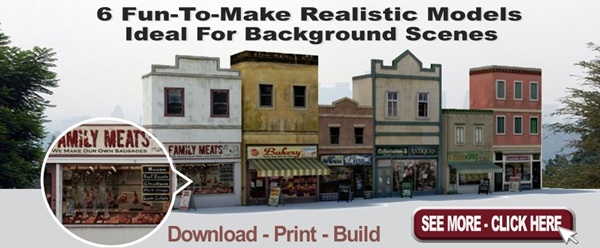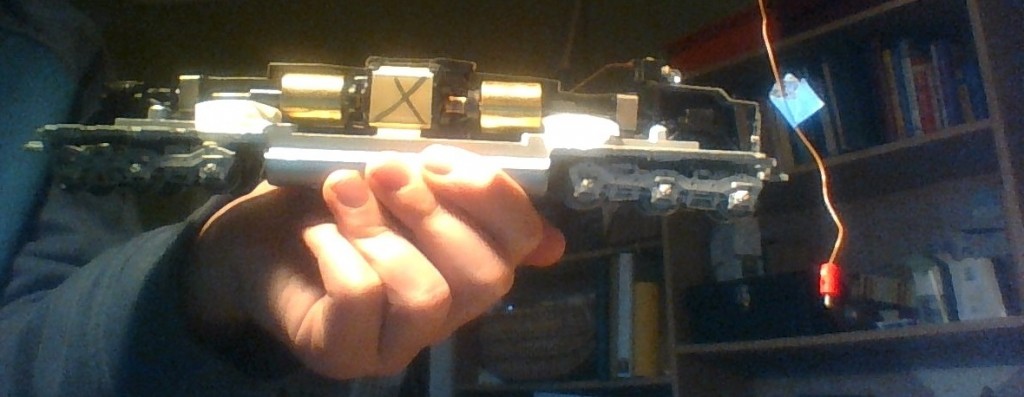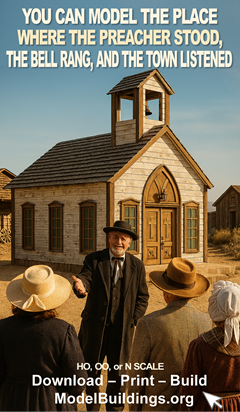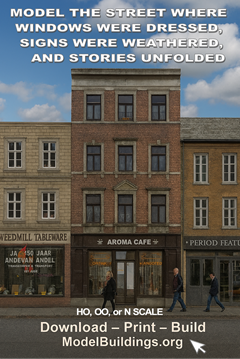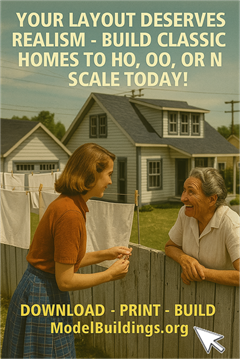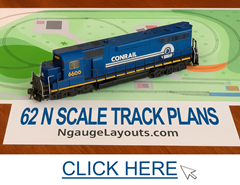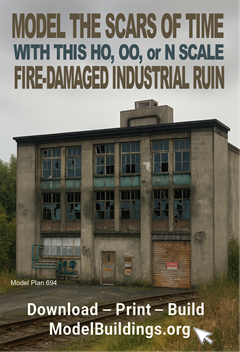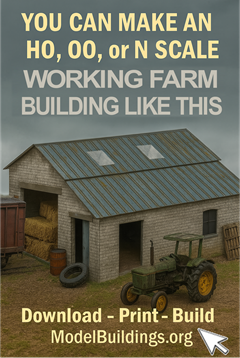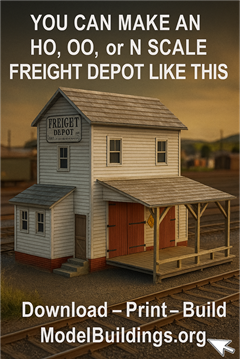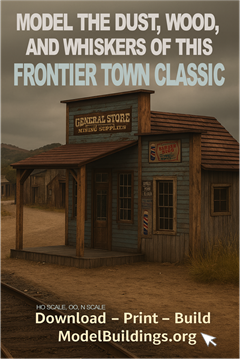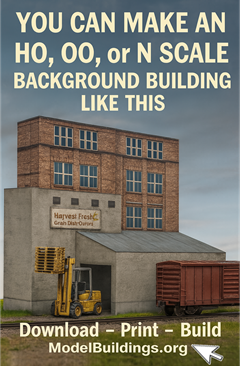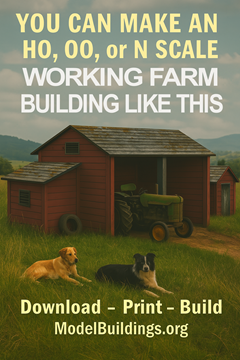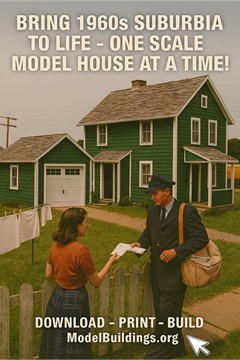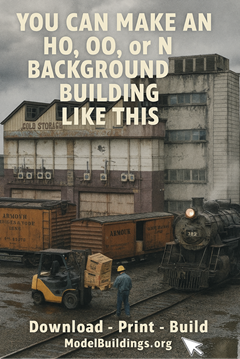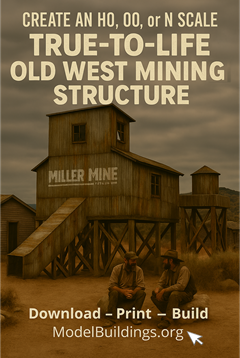Everything on model trains, model railroads, model railways, locomotives, model train layouts, scenery, wiring, DCC and more. Enjoy the world's best hobby... model railroading!
Where To Buy Vintage Model Vehicles For a Model Railroad
Roy has a question for readers:
“Does anyone know where I can purchase N Scale model vehicles from the 1880’s to the 1930’s? I would prefer already assembled.”
Perhaps Roy could add a comment below this posting confirming whether he is looking for USA scale models, European, or maybe vehicles seen on roads in other parts of the world.
How to Remove Locomotive Body
Richie asks readers:
“Please how do you remove the body of an N Gauge Graham Farish MT4 2-6-4 to check if it is DCC ready.”
London Bridge Model Railroaders Seek Help
Jim asks readers:
“Our new model railroad club, the London Bridge Model Railroaders, is building the Needles subdivision in HO. We are having a lot of trouble finding our centerpiece, El Garces Hotel in Needles, Ca. We would love to find a kit or at least plans for the building. Any suggestions would be appreciated.”
How to Fix Problem When Locomotive Passes Over Remote Switches
Kevin asks readers:
“I have an N-scale railroad which includes about a half-dozen Atlas remote switches. When the locomotive passes over a few of the switches, there is unevenness that causes a brief interruption in the motion of the locomotion. Is it possible to use a fine sandpaper to smooth out the track so that the locomotive passes over the switch smoothly? Or is there a better solution? Thanks in advance for any advice that is offered.”
Steam Engines in South Africa
Geoff sent in these photos to share:
Your readers may be interested in the pictures (sent by my brother) taken in Pietermaritzburg (50 miles inland from Durban, South Africa) altitude 2500 ft. The gauge is 3’6” to accommodate the hilly country. The line runs to Johannesburg (6000 feet) so the engines were big.
I am not sure when they were taken but probably in the late 1960’s early 1970s.
What is Tsunami Sound?
John has a question for readers:
“I am thinking of getting into model train hobby again after several years absence. I notice many of the diesel engines are now listed as Tsunami sound along with DCC. What is Tsunami sound? Just asking. Been out of model trains for years.”
Diesel Heritage 0-6-6-0 Locomotive Won’t Work
Miles asks readers:
“I have problem with a diesel Heritage 0-6-6-0 locomotive. It has all-wheel drive and is HO scale, and is driven at the center and transmitted to the wheels by 2 plastic shafts. Some friends were over here a few months ago a I think they broke it. It runs slowly, and doesn’t pick up well, even though we (my dad and I) cleaned it and the track. It can’t pull a train. What should I do with it?
1960’s Model Train Commercial
Defend your Lionel model train empire from the attacking enemy force with this all new 1960’s Turbo Missle Firing Car, with Reconaissance Helicopter Car, and Aerial Target Cars.
Steve’s Layout
Steve sent in this photo of his layout to share –
“Many thanks for the 4 years I have been receiving your info. I am on my 2nd layout and having a great time. Attached is a recent photo (this is not yet a completed diorama) of my ongoing first attempt. All of your posts have been very much appreciated. Thanks, Steve (I’m 75 years old in Oklahoma).”
How to Install a Tsunami DCC Decoder in Loco
Miles asks readers:
“How do you install a Tsunami DCC decoder on a Rivarossi AC-11 HO scale cab forward locomotive? I plan to transform my entire layout to DCC, and I would like to start with this loco.”
Can You Put a Diode in Series with the LED?
Floyd asks readers:
“I’ve not tried this but am wondering if anyone has put a diode in series with the LED. I think it would convert the power to DC but would probably require some tinkering to get the current correct. Just a thought without practical experience.”
Problem with Old Athearn SW7 Loco
Lonny asks readers:
“I have an HO Athearn SW7 loco I was given. It had been in storage a very long time. When I tried to run it first time it just sat there and the light barely came on an wouldn’t move. I found a site that showed me how to disassemble it. I cleaned all the electrical and disassembled the trucks and cleaned out the old hard grease. I put it back together EXCEPT for the worm gear on each truck. I sat it on the track and the motor spun just fine, the light was nice and bright. I put the worn gears back on and tried again but it barely moved. So the problem is in the trucks, but what it is I can’t figure out. There is no grease in the trucks yet because I wanted to ensure it worked before I greased and oiled it. During reassembly I kept checking that everything moved/rotated and it did. Any insight on how to fix this will be greatly appreciated.”
Restoring Old Marklin Loco’s to Working Order
Ed asks readers:
“I have 15 or more old HO Marklin locomotives in a box in the closet. They are there because I ‘m still starting to build my layout. What do I need to do to get them running? They are stored in their original.boxes.”
Building a New York City Elevated Subway Section
Steve asks readers:
“I am trying to build an N scale New York city elevated subway section and I have only found the viaduct sections in HO scale from Micro Engineering. It seems no one makes any in N scale. Does anyone have an idea how I can either make my own or where I can buy what I need ? This is holding up my layout.”
On30 DC System with Sound?
Mike asks readers:
“I ran across a setup at the Denver model RR show of an on30 layout that used DC but had sound like a DCC setup. When researching this I found nothing online for sale. Anyone have experience with a setup like this?”
How to Control a Locomotive Sound Card
Art has a question for readers:
“I guess I’m a dullard. Even with a strong technical background I haven’t figured out what I need to buy to get sound working in a NOS Aristocraft U25B Santa Fe locomotive. I’ve visited various websites – I know about different sound cards but beyond that not much. The last time I messed with model trains was when I kid and that was ages ago. I’m a newbie to G scale. What was a starter set that was just for year-end holiday decor has become a mainline RR.I have a couple of locos, several cars, track and a couple of analog power supplies. I don’t really know what’s needed to control the loco’s sound card or the costs involved. HELP!”
Replicating What Could Be A Real Life Scene
I reality the world is far from perfect, so to look authentic, a scene on a scale railway layout is also likely to have imperfections. This scene captured at the Brisbane, Australia 2015 Train Show is a good example. Notice the little wall surrounding the tall tanks – notice it’s a bit uneven and rough. The surface on the little road leading to workshops is not perfectly edged – in fact it seems to disappear into gravel/dirt. Little details like these can be the difference between an artificial manicured looking scene, and one that looks as if it would in the real world. Worth thinking about? This video has more suggestions for creating authentic looking scenery.
